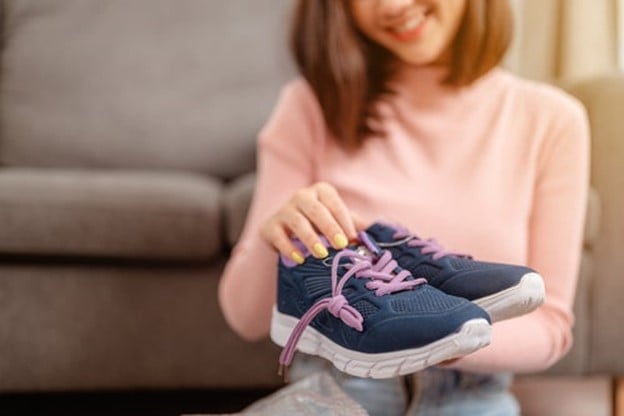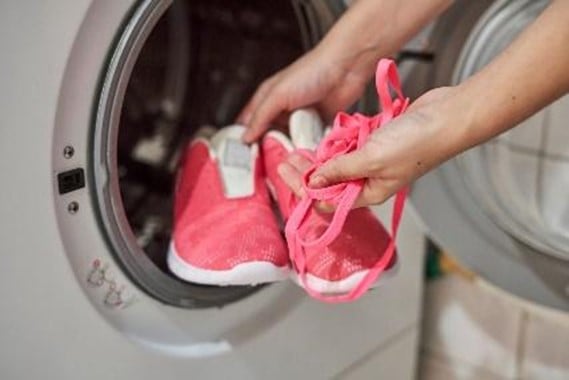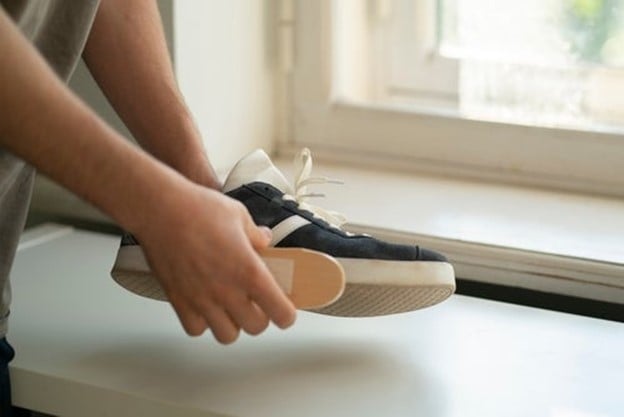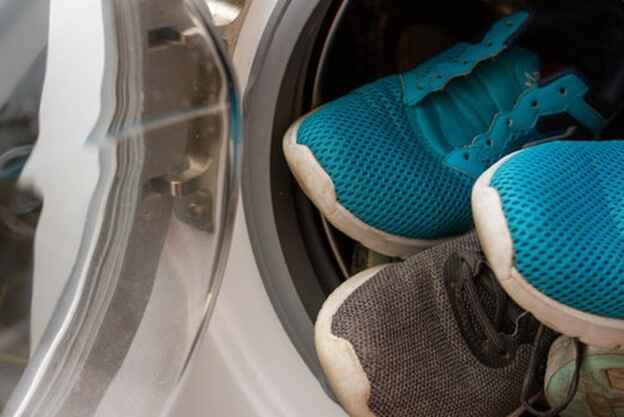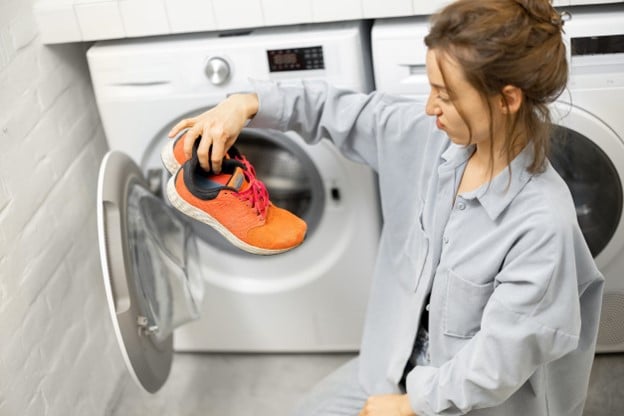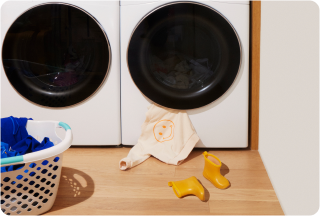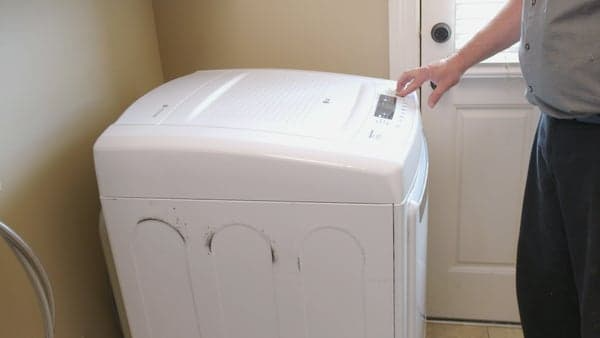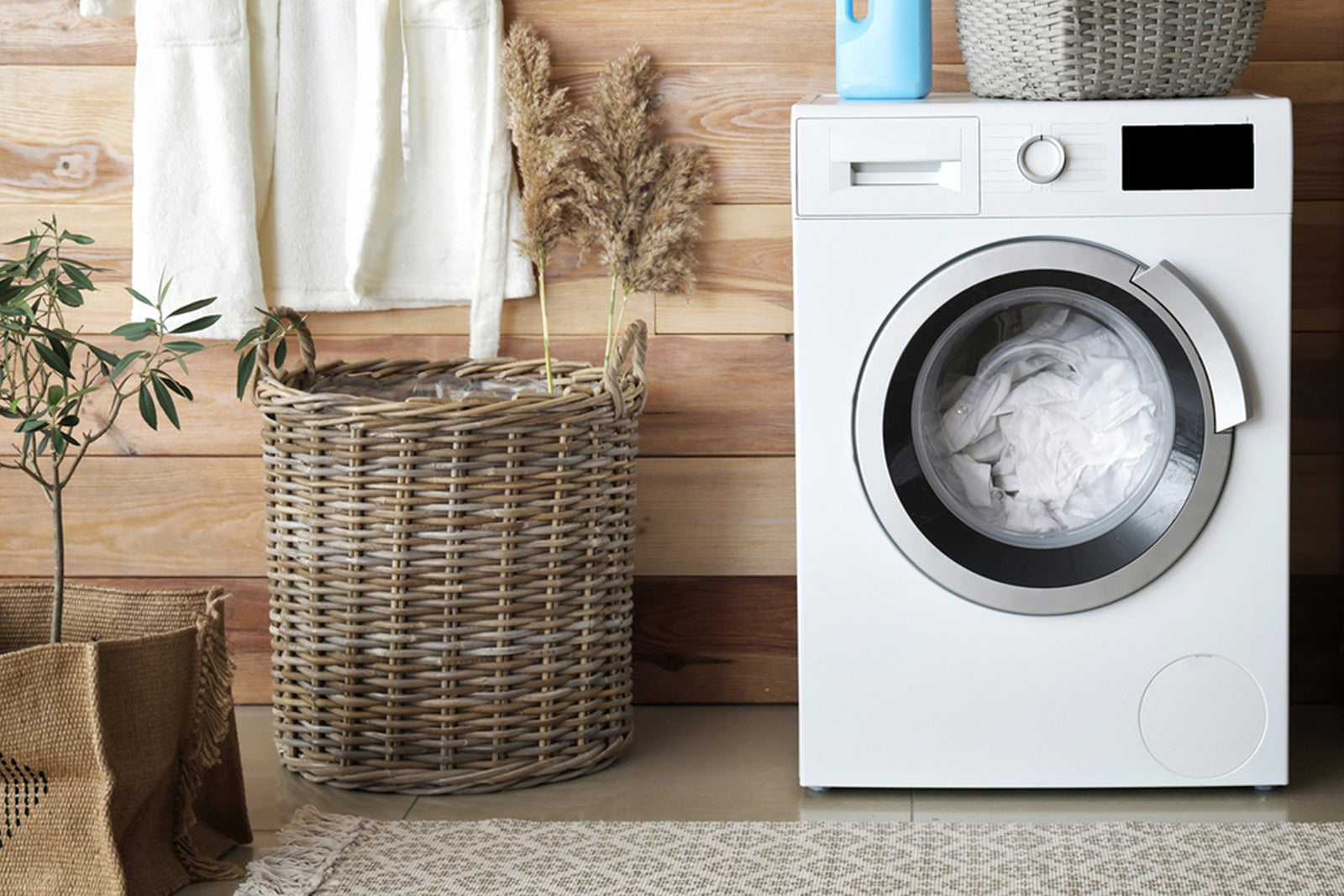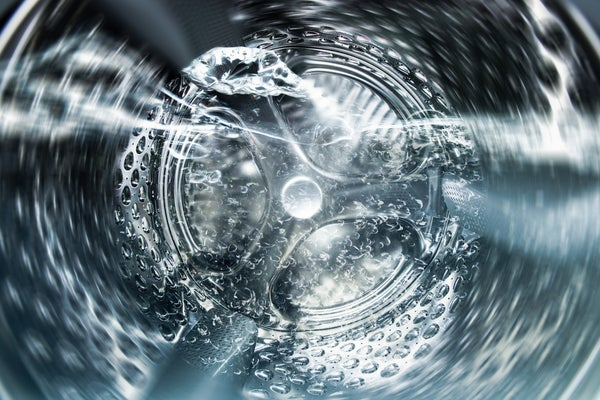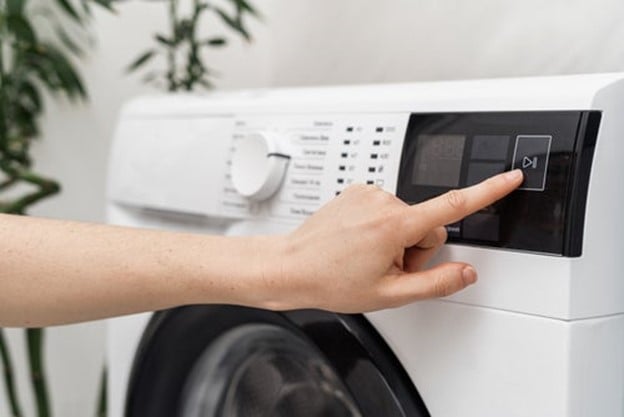
Step 5: Start the wash cycle.
Remember that a delicate, cold-water cycle is best and will help keep your fabric shoes free from harm. Avoid powder detergent, which can get caught in shoe soles and shoelace holes. Instead, use liquid detergent or laundry pods.
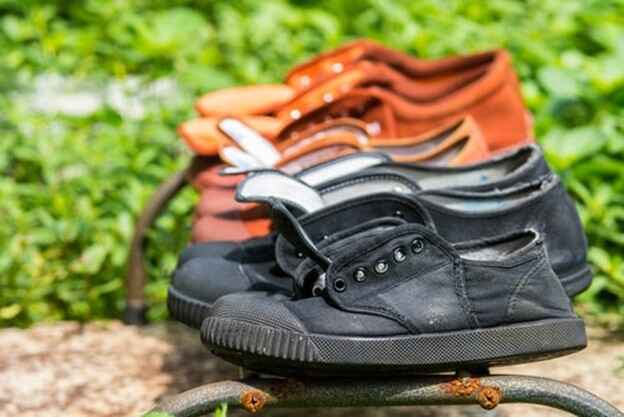
Step 6: Air dry your shoes for best results
After the wash cycle is complete, it’s time to dry your shoes.
You really shouldn’t be drying your shoes in the dryer. Dryer temperatures can damage the glue that holds shoes together. High heat can even cause certain fabric sneakers to shrink, permanently warping your shoes and affecting their fit and performance.
The best way to dry your shoes is to find a cool, sunny, and well-ventilated space and leave them there. Stuff some small towels inside your shoes to help them keep their shape as they dry. Generally, you should only wash your shoes when you can allow enough time for them to air-dry completely. Otherwise, you are just creating a moist environment for funky bacteria to thrive. If you need to speed things up, you can aim a fan or blow-dryer at your sneakers.
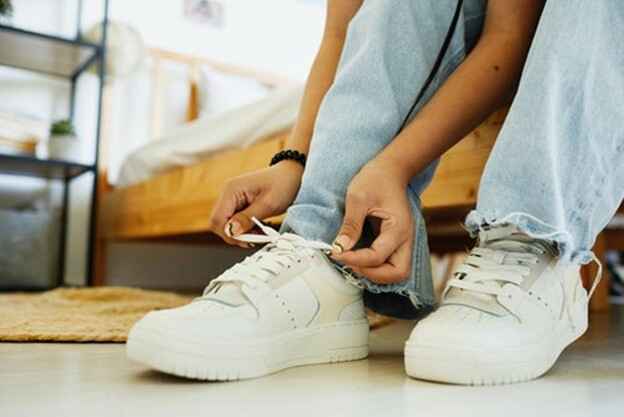
Step 7: Reassemble your shoes
Once your shoes are clean and dry, add the soles and laces back in. Then, rock your spotless kicks.
What NOT to do when washing shoes in the washer
While cleaning your shoes in the washing machine may seem simple, there are several things you must steer clear of during the process. Here is a quick summary of the main things to avoid:
- Never wash leather sneakers or suede shoes in the washing machine.
- Do not use warm or hot water cycles. Hot water can warp your shoes, damage the fabric, and cause colors to run.
- Do not use a powder detergent since it may not dissolve properly and could get caught in your shoes.
- Do not put your shoes in the washer without first removing the laces and insoles. Insoles should be hand-washed, while laces should be either hand-washed or kept in a separate laundry bag or pillowcase in the washer.
- Do not put your shoes in the dryer. Dryers can damage shoe glue and warp their shape.
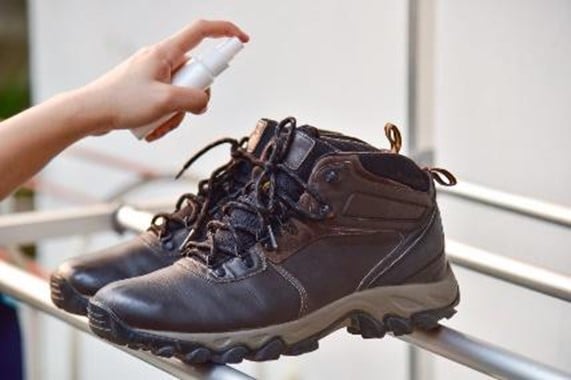
Alternatives to washing shoes in the washing machine
It’s normal to feel apprehensive about putting your shoes in the washing machine. If your shoes aren’t washer-friendly, or you simply don’t want to risk damaging them, try one of the following methods to wash them by hand:
- Hand-wash fabric shoes. Use a solution made of one teaspoon of dishwashing liquid and two cups of warm water to hand-wash fabric shoes. Scrub the shoes using the solution and a toothbrush, then wipe them off with a paper towel to dry. You can also wash your insoles using this mixture.
- Use vinegar for leather shoes. Use equal parts distilled white vinegar and cold water to clean leather shoes. Wipe down your shoes with a cloth dipped in the solution. Then, let them air-dry.
- Deodorize. If you want to tackle your shoes’ odor, you can try deodorizing them instead of giving them the full washing treatment. Shoe deodorizers like the Poo-Pourri Shoe Odor Eliminating Spray, Woodlore Cedar Shoe Fresh Inserts, and Odor-Eaters Odor-Destroying Insoles are great store-bought options. For a homemade deodorizer, sprinkle your shoes with baking soda and let them sit overnight. Any malodorous smells will be minimized—if not eliminated—by morning.
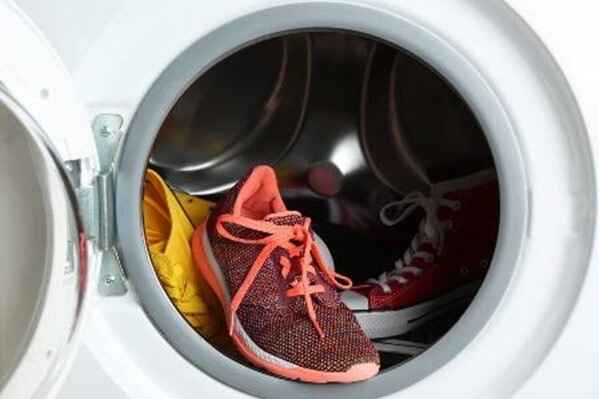
Final thoughts on sneaker cleaning
Using your washer to make your shoes squeaky clean is easy and efficient, but it doesn’t come without risks. When learning to wash shoes in the washing machine, be mindful of factors like shoe material, wash cycle type, and appropriate drying methods. If you are ever in doubt, wash them by hand.
It’s also important to perform washer and dryer maintenance to ensure that your machine stays in tip-top shape for all your laundry needs. Consider signing up for a home warranty plan that includes warranty coverage for your washer and dryer. A washing machine warranty helps ensure peace of mind and budget protection. American Home Shield helps cover the cost to repair or replace covered parts of your home systems and appliances when they break down due to everyday wear and tear. So, if you need help draining water from the washing machine or the appliance is broken, simply submit a service request, pay your service fee, and we’ll send a Pro to your home to diagnose the issue.
See the plan agreement for coverage details, including service fees, limitations and exclusions. Charges for non-covered items may apply.
Frequently Asked Questions
What types of shoes can I put in the washing machine?
Shoes made from canvas, nylon, cotton, and polyester should be fine to throw in the washing machine. Most sneakers and tennis shoes are made from fabrics that can take the rough and tumble rigors of a machine wash.
Certain shoes don’t belong in the washer, like those made from leather, suede, rubber, and vinyl. Hand-wash or spot-clean them instead of putting them in the washing machine.
Do I need to add disinfectant to my wash cycle?
This is a matter of personal preference. Adding disinfectant to the wash cycle is wise if your shoes are particularly pungent and you are prone to suffering from fungal infections like athlete’s foot. To prevent nasty bacteria and fungi, try adding a pine oil disinfectant at the beginning of the wash cycle. The disinfectant needs to be at least 80 percent pine oil, and you’ll need to run the washer on a warm water cycle for it to be effective.
Which type of washing machine is best for washing shoes?
Front-load vs. top-load washers: Which one reigns supreme for your footwear? Front-load washing machines tend to be gentler and have better controls on spin and temperature.
Most top-load washing machines clean by agitation, which can be rough on your clothes. The exception is impeller models, which don’t feature a central column (the agitator). Impellers tend to be rare, but they are gentler on your clothes and shoes. This isn’t to say you should ban your shoes from your top loader—if you use your best judgment and stick to a delicate cycle with cold water, your shoes should be fine.
